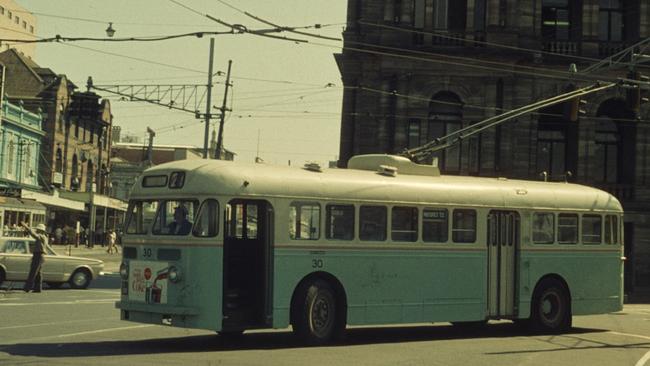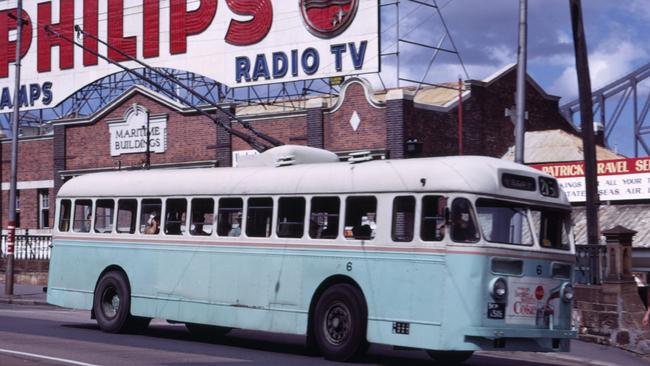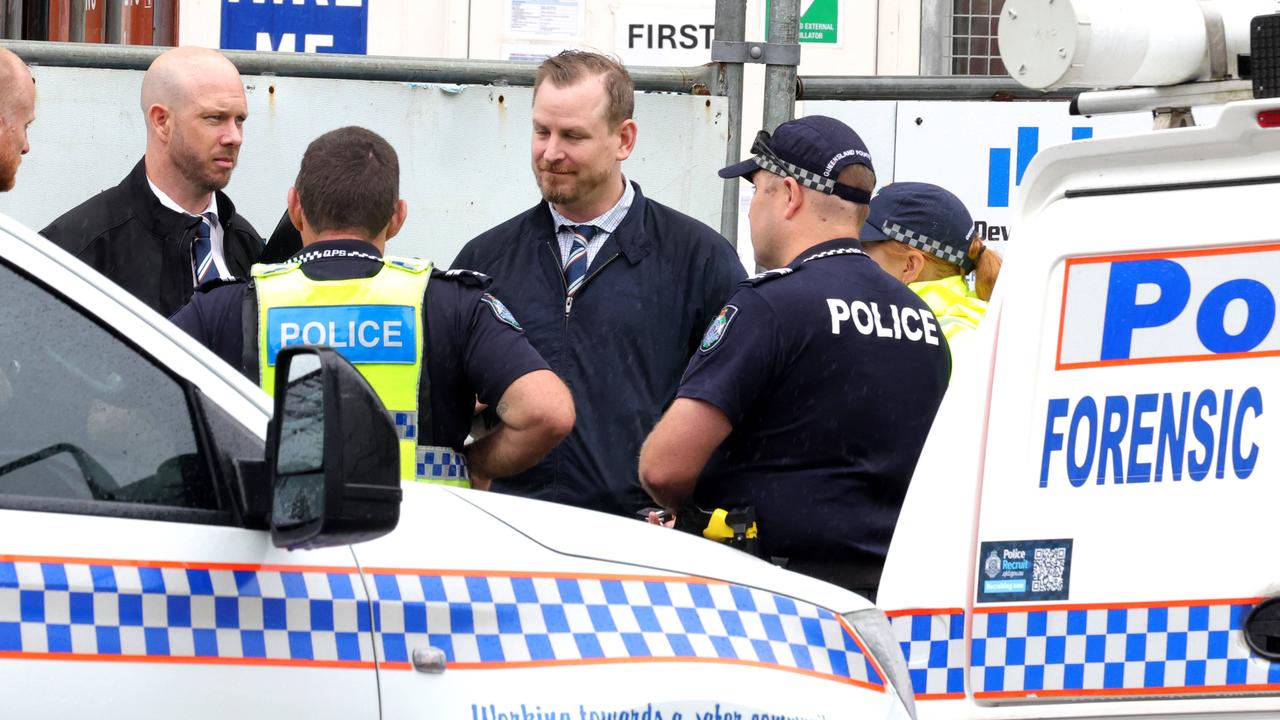Way We Were: Brisbane trolleybuses, nicknamed ‘whispering death’ had lives cut short
Pedestrians stopped and stared as “Whispering Death” hit the streets of Brisbane in 1951, writes Dot Whittington, but was the fear-inducing nickname justified during its short lifespan?

Brisbane City
Don't miss out on the headlines from Brisbane City. Followed categories will be added to My News.
THE trolleybuses were dubbed “Whispering Death” because they were so quiet that nobody heard them coming, but they didn’t kill a soul after arriving on the streets of Brisbane in 1951.
In their short life as a poor relation to the tramways network, they did solve a lot of problems. The trams struggled up the city’s steep hills, monopolised the roadway and were noisy with their clanging, banging, grinding and gonging.
Trolleybuses had double poles carrying power from overhead wires to swivelling booms on the roof. Unconfined by tracks, they could pull off to the kerb for passengers without blocking traffic, did not require imported fuel, were cheaper than diesel, climbed hills without a problem and ran smoothly and whisper quiet.
They were already being used in other cities around the world, as well as other Australian capitals when Brisbane City Council placed an order for 30 chasses with the Sunbeam Trolley Bus Company in England in 1947. Electric-powered buses had been on the radar since before World War I – parliament passed the Railless Traction Act in 1914 to enable construction of a trolleybus system in Toowoomba – and Brisbane Tramways had experimented with buses in the 1920s.

The problem then was that Brisbane’s roads were not up to the job. They needed to be strengthened and it was feared corrugations and undulations in the road surface would be fatal to the trolley. The population was growing steadily after the war – 454,000 in 1951 – and few could afford a car, so there was real optimism for trolleybuses. With post-war shortages, it was late January 1950 before the first two Sunbeam chasses were unloaded in Brisbane.
They were taken straight to the tramway workshop at Milton, near where Suncorp Stadium now stands, to be built and fitted. Aluminium sheeting was used to make them lighter and increase the pay load. Trams had been struggling to get up Edward St – the steepest tramline in Australia – and were slipping on the tracks so it was agreed the first trolleybuses would be on the 1.3km route down Edward St between Gregory Terrace and the botanic gardens.
The roundabout at the Edward St entrance to the gardens still stands as a reminder of where the trolleybuses turned. The first trolleybus finally hit the streets on August 12, 1951. “Pedestrians stopped and stared after their first glimpse of the sleek silver vehicle with overhead poles like a tram, but body and wheels like a bus,” it was reported. “Motorists jumped in their seats as it suddenly whispered past them threading its way through traffic. Some called it a Whispering Ghost.”

Patronage exceeded expectations and the Sunbeams soon became a tourist attraction. One conductor who began the morning with 1000 children’s tickets had to get more by midday. Within six months Brisbane’s two-millionth passenger took the Botanic Gardens-Gregory Terrace route, still the only trolleybus run.
Apart from material shortages, the council had to watch the electricity. The buses shared the power supply with trams and any extension depended on supply during winter. It was said a trolleybus service used as much electricity as a small suburb or two large housing estates. The proposed route to the university at St Lucia had been abandoned even before the first order was delivered, as residents objected to unsightly power poles and overhead wires spoiling the view down Coronation Drive.
Left with an oversupply of buses, the council decided on a route from the hospital at Herston to East Brisbane. It bypassed the city and went through the Valley – the largest non-CBD shopping centre in Australia at the time – and over Story Bridge. It opened in November 1952.
Two years later, residents of Coorparoo weren’t happy when the Sunbeams replaced their tram route.
They said they were being forced to travel a longer route through the Valley to the city which cost 2d more; and housewives could no longer shop at Stone’s Corner but had to go to the city.
The “Whispering Death” weren’t responsible for any fatalities, although there were a few minor run-ins when they first began silently moving down Edward St.
The trolleybus network peaked with 36 Sunbeams covering 28km in 1960. In June 1968 the lord mayor announced that diesel buses were cheaper and more flexible and would replace all Brisbane electric transport services. The trolleybuses disappeared just a few weeks before the trams.
All but two were sold, and they can now be found at the Brisbane Tramway Museum at Ferny Grove. It will celebrate the 70th anniversary of the first trolleybus service today, 12.30pm-7.30 pm. As well as trams and vintage buses the new Brisbane City Council electric bus and other electric vehicles will be on display.
Visit brisbanetramwaymuseum.org


